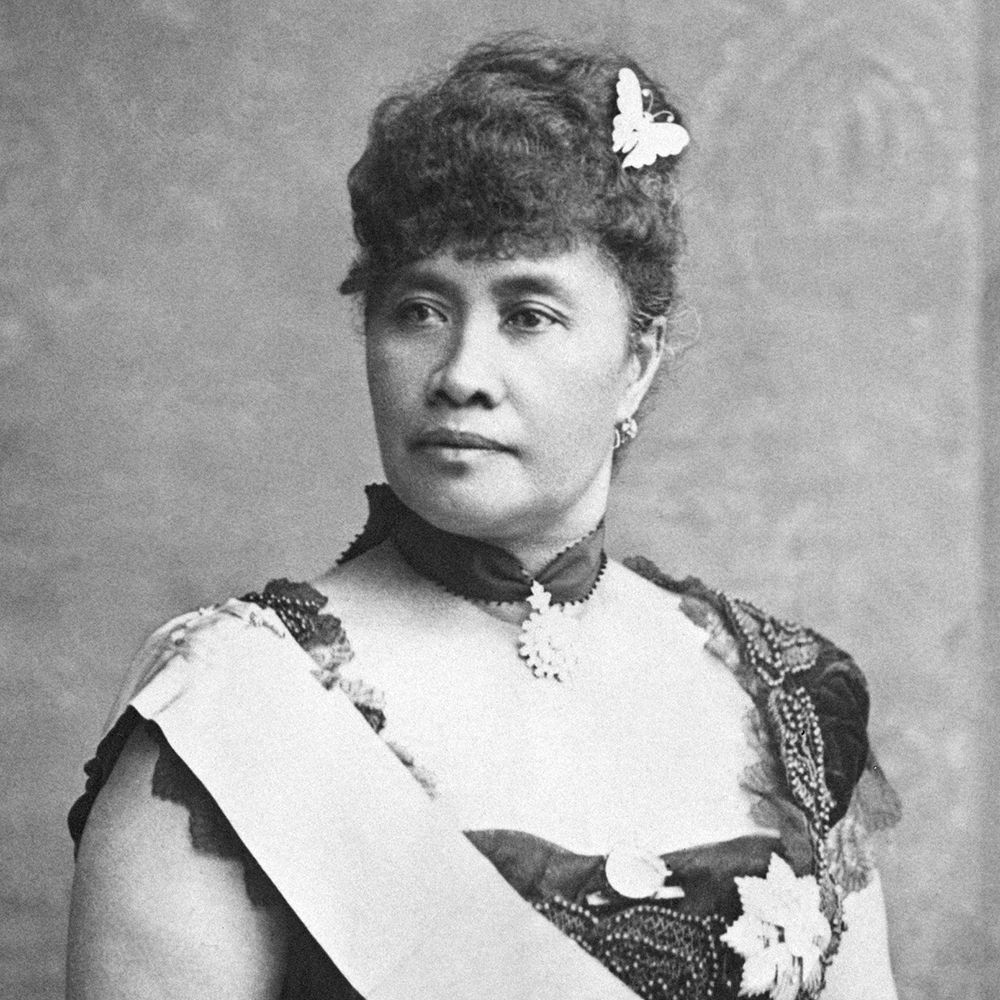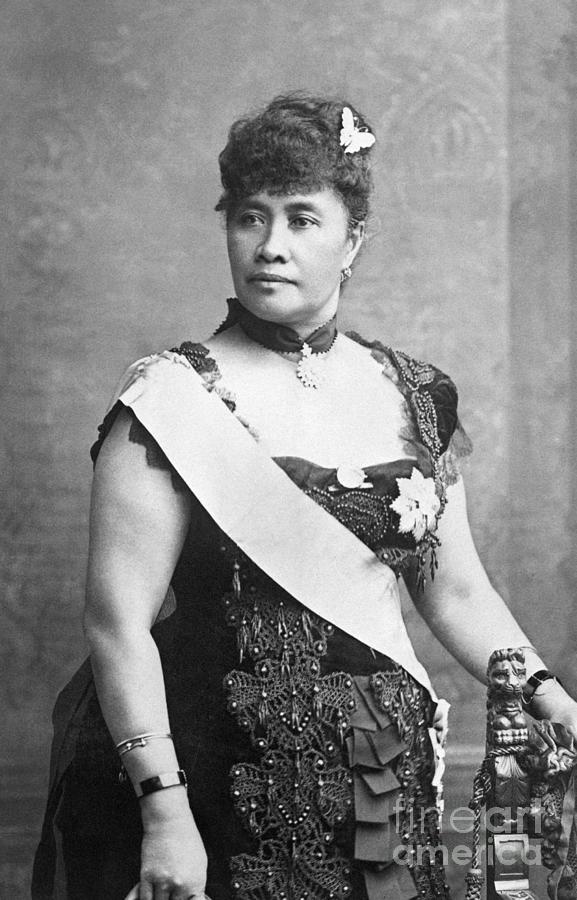
The Unbowed Queen: Liliʻuokalani and the Tragic Fight for Hawaii’s Sovereignty
The air hung heavy with the scent of plumeria and the unspoken weight of a kingdom’s end. It was January 17, 1893, and in the opulent ʻIolani Palace, the only royal residence on American soil, Queen Liliʻuokalani, the last reigning monarch of the Hawaiian Kingdom, faced an impossible choice. Outside, a cabal of American and European businessmen, supported by armed U.S. Marines, stood poised to dismantle centuries of Polynesian rule. Her decision that day, to yield her throne under protest rather than spill the blood of her beloved people, would forever etch her name into the annals of history as a symbol of dignity, resilience, and the enduring fight against imperial ambition.
Born Lydia Kamakaʻeha on September 2, 1838, she was a woman destined for greatness, but also for profound sorrow. Her early life was steeped in the rich traditions of the Hawaiian aliʻi (nobility), yet also exposed to Western education. Fluent in English and a gifted musician and composer, she embodied the complex fusion of cultures that defined 19th-century Hawaii. She was educated at the Royal School, established by American missionaries, alongside her siblings and other young aliʻi, preparing them for the responsibilities of leadership. This dual exposure provided her with both a deep understanding of her heritage and a keen awareness of the encroaching foreign influences.
Her path to the throne was not direct. She became Princess Regent in 1881 when her brother, King Kalākaua, embarked on a world tour, and later heir apparent upon the death of her youngest brother. During these years, she observed firsthand the increasing pressures on the Hawaiian monarchy. American sugar planters, missionaries, and businessmen had amassed significant economic and political power, often at the expense of native Hawaiians.

The seeds of discontent were sown deep with the imposition of the "Bayonet Constitution" in 1887. Forced upon King Kalākaua by a group of armed, white, anti-monarchist militants known as the Hawaiian League, this document drastically curtailed the monarch’s power, disenfranchised many native Hawaiians, and granted voting rights to non-citizen Caucasians. It was, in essence, a coup by legal document, designed to ensure foreign control over the kingdom’s affairs. Liliʻuokalani, then Princess, fiercely opposed this constitution, witnessing its devastating impact on her people’s sovereignty.
Liliʻuokalani ascended the throne in 1891, upon the death of King Kalākaua, with a clear mandate from her heart: to protect her people and restore the dignity and authority of the Hawaiian monarchy. Her coronation oath was a solemn vow to uphold the existing constitution, yet her true mission was to replace the humiliating Bayonet Constitution with one that would restore voting rights to native Hawaiians and monarchical power. "I am Liliʻuokalani, by the Grace of God, Queen of the Hawaiian Islands," she declared, her resolve unwavering. "I desire to maintain my throne for the sake of my people, whose rights I believe I am called upon to defend."
Her attempt to promulgate a new constitution in January 1893, however, proved to be the catalyst for her downfall. She believed she had the support of her cabinet and the overwhelming majority of her subjects. News of her intentions, however, quickly reached the Committee of Safety – a group of thirteen anti-monarchy, pro-annexation foreign residents, primarily American and European businessmen. They saw her actions as a threat to their economic interests and political dominance.
On January 16, 1893, at the behest of the Committee of Safety, U.S. Minister John L. Stevens landed 162 Marines and sailors from the USS Boston in Honolulu. Their stated purpose was to protect American lives and property, but their presence unequivocally signaled American support for the overthrow. The next day, the Committee of Safety declared the monarchy abrogated and established a provisional government, with Sanford B. Dole, an American lawyer and businessman, at its head.
Faced with the overwhelming military might of the United States and the prospect of bloodshed, Queen Liliʻuokalani made the agonizing decision to surrender. In a formal proclamation, she stated: "I, Liliʻuokalani, by the grace of God Queen of the Hawaiian Islands, do hereby solemnly protest against any and all acts done against myself and the constitutional Government of the Hawaiian Kingdom by certain persons claiming to have established a Provisional Government of and for this Kingdom." She continued, "Now to avoid any collision of armed forces and perhaps the loss of life, I do under this protest and impelled by said force yield my authority until such time as the Government of the United States shall, upon the facts being presented to it, undo the action of its representatives and reinstate me in the authority which I claim as the constitutional sovereign of the Hawaiian Islands." This act of surrender was not an admission of defeat, but a strategic move, a plea for justice from a higher authority, believing the United States would right the wrong.
However, her hopes for American intervention to restore her throne were repeatedly dashed. Despite President Grover Cleveland’s investigation, which concluded that the overthrow was an "act of war" and unlawful, and his recommendation for the Queen’s reinstatement, the U.S. Congress, influenced by powerful pro-annexation lobbies, refused to act. The provisional government solidified its power, eventually declaring itself the Republic of Hawaii in 1894.
The Queen’s resistance did not end with her surrender. In 1895, a counter-revolution led by loyalist Robert Wilcox attempted to restore the monarchy. The attempt failed, leading to Liliʻuokalani’s arrest. She was charged with misprision of treason – knowing about the plot but failing to report it – and imprisoned in an upstairs bedroom of her own home, ʻIolani Palace. For eight months, she was held captive, denied visitors, and allowed only limited contact with the outside world.
During her imprisonment, Liliʻuokalani displayed extraordinary resilience. She famously composed music, including the hauntingly beautiful "Ke Aloha ʻĀina" (Love for the Land) and completed her memoirs, "Hawaii’s Story by Hawaii’s Queen," a powerful firsthand account of the overthrow and a plea for justice. It was during this period, or shortly before, that her most famous composition, "Aloha ʻOe" (Farewell to Thee), became an anthem of longing and loss, its bittersweet melody echoing the fate of her kingdom. She also used her time to sew a quilt, now a historical artifact, which subtly tells the story of her imprisonment and the names of her loyal supporters.

After her release, she was placed under house arrest for another eight months. Even after gaining full freedom, Liliʻuokalani never ceased her efforts to restore Hawaiian sovereignty. She traveled to the United States multiple times, presenting petitions to Congress, arguing tirelessly against annexation. In 1897, when President McKinley submitted an annexation treaty, she and a delegation of native Hawaiian leaders presented a massive petition, Kūʻē Petition, bearing 21,269 signatures – representing the overwhelming majority of the native Hawaiian population – unequivocally rejecting annexation. This petition played a crucial role in preventing the treaty’s ratification.
However, the outbreak of the Spanish-American War in 1898 provided a pretext for annexation. The strategic importance of Pearl Harbor led Congress to pass the Newlands Resolution, effectively annexing Hawaii as a U.S. territory without a treaty and without the consent of the Hawaiian people. It was a bitter blow, the ultimate betrayal of her trust in American justice.
Liliʻuokalani spent her remaining years as a private citizen, living in her home, Washington Place (now the official residence of the Governor of Hawaii). She continued to advocate for her people, championing their rights and cultural preservation. She established a fund for the education of Hawaiian children and remained a beloved figure, a living embodiment of the spirit of Hawaii. She passed away on November 11, 1917, at the age of 79, her passing marking the end of an era but not the end of her legacy.
Queen Liliʻuokalani’s story is not merely a chapter in Hawaiian history; it is a living testament to resilience, a powerful echo of a kingdom lost but never forgotten. Her unwavering commitment to non-violence in the face of overwhelming force, her dignified resistance, and her enduring love for her people continue to inspire. In 1993, a century after the overthrow, the U.S. Congress passed the Apology Resolution, publicly acknowledging the "illegal overthrow of the Kingdom of Hawaii" and the "deprivation of the rights of Native Hawaiians to self-determination." While a symbolic gesture, it was a long-overdue validation of the justice Queen Liliʻuokalani had sought throughout her life.
Today, her legacy lives on in the Hawaiian sovereignty movement, in the resurgence of Hawaiian language and culture, and in the hearts of all who believe in self-determination and the power of a people’s spirit. Liliʻuokalani, the unbowed queen, remains a beacon of strength, her voice echoing through the generations: "Never has a people loved their country more than these." Her life stands as a poignant reminder that even in defeat, true sovereignty can never be fully extinguished when it lives in the heart of a nation.


